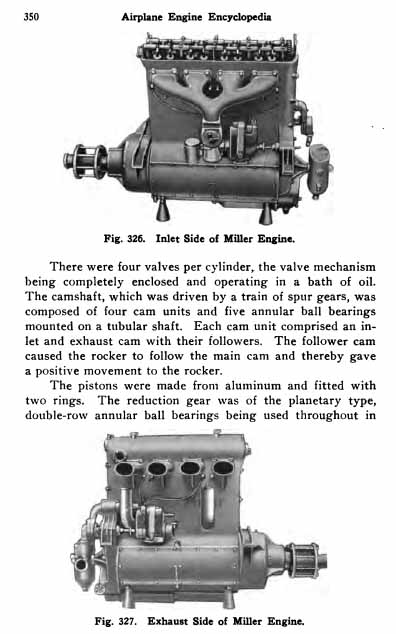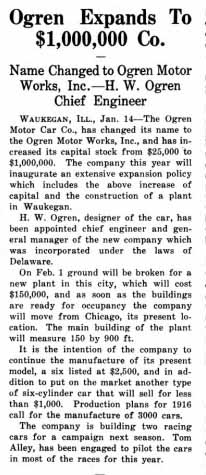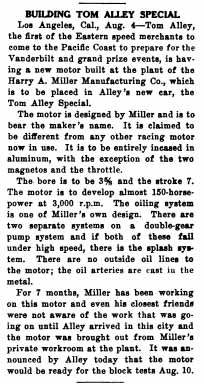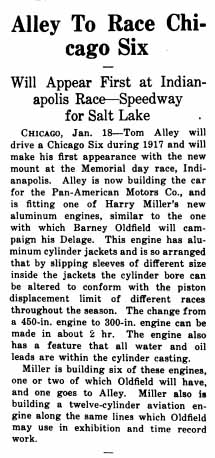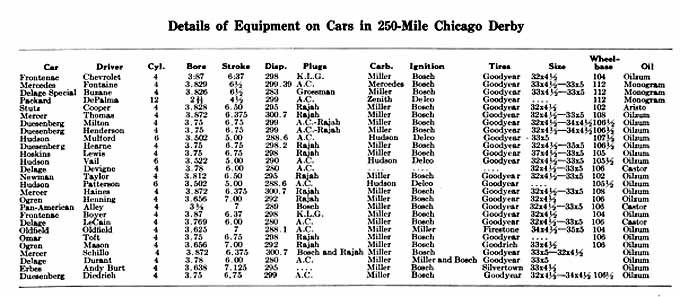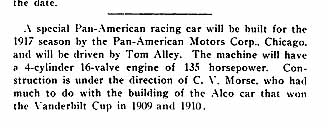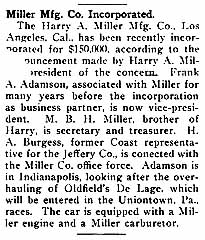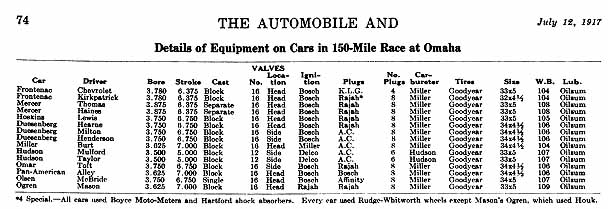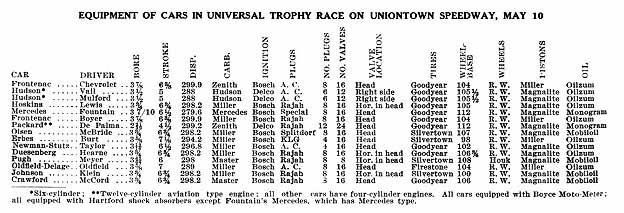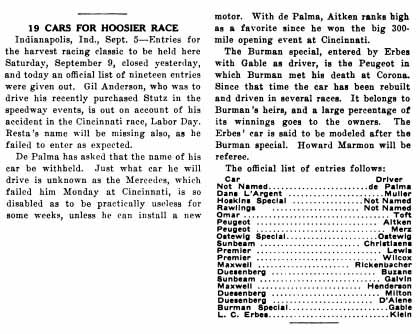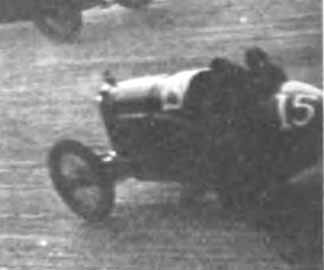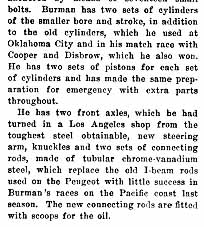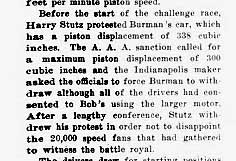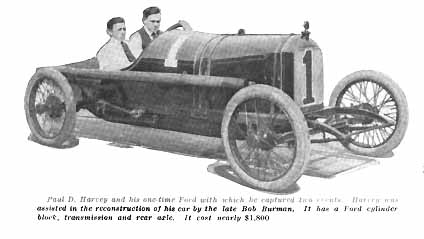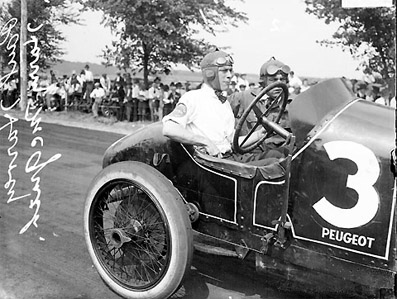Théo Schneider:
It is amazing how many technical details of European racing cars were not published in Europe but appeared in Motor Age and The Automobile, the reports in most cases being written by William Bradley.
The two-piece crankshaft of the 300-inch Miller ran in three ball bearings, the ball bearing at the flywheel/clutch end being a double row bearing. Probably this solution was taken over from Premier and originally came from Bob Burman (the two-piece crankshaft of the 5.6-, 3- and 4.5-liter Peugeots - and of the 300-inch Stutz - ran in three single row ball bearings - the one-piece crankshaft of the 4.5-liter Théo Schneider engine ran in three two-piece roller bearings).
It seems that there were direct connections between Burman, Premier and Miller, and that a lot of components - at least - for the Premiers were manufactured in Los Angeles, by Miller and other specialized suppliers. The name Miller was not explicitly mentioned. Officially, the Premiers were built in Indianapolis, in the plant of the Mais Motor Truck Co. (founded by Johnny Mais), under the direction of James Yarian.
The Automobile, 10 February 1916, page 294:
"Burman to Drive Premier:
Bob Burman has signed a contract to drive Premier racing cars, which will be built in time to enter the 300-mile Indianapolis Speedway race on May 30. It is stated that he will have a voice in the construction of the car which he will drive. During his stay on the Pacific Coast where he will drive in the Ascot Park race, Feb. 22, he will build several parts for his Premier car, and will devote practically all of his time helping to complete a car."
Motor West, 1 May 1916, page 13:
"Preparing for the Annual Battle at Indianapolis:
The death of Bob Burman at Corona has changed the plans of some of those interested in the coming 300-mile Speedway race at the Indianapolis Motor Speedway, May 30th. Burman was to have driven one of the new Premier Specials which are being built in the factories at Indianapolis. Who will take his place is not known. Burman is credited with having incorporated in these new cars many of his pet theories and constructional features that experience has taught him."
= = = =
Alley's Pan-American:
Motor Age, 10 August 1916, page 14:
"Building Tom Alley Special:
Tom Alley, the first of the Eastern speed merchants to come to the Pacific Coast to prepare for the Vanderbilt and grand prize events, is having a new motor built at the plant of the Harry A. Miller Manufacturing Co., which is to be placed in Alley's new car, the Tom Alley Special. The motor is designed by Miller and is to bear the maker's name. It is claimed to be different from any other racing motor now in use. It is to be entirely incased in aluminum, with the exception of the two magnetos and the throttle. The bore is to be 3 5⁄8 and the stroke 7. The motor is to develop almost 150 horsepower at 3,000 r.p.m. The oiling system is one of Miller's own design. There are two separate systems on a double-gear pump system and if both of these fail under high speed, there is the splash system. There are no outside oil lines to the motor; the oil arteries are cast in the metal. For 7 months, Miller has been working on this motor and even his closest friends were not aware of the work that was going on until Alley arrived in this city and the motor was brought out from Miller's private workroom at the plant. It was announced by Alley today that the motor would be ready for the block tests Aug. 10."



